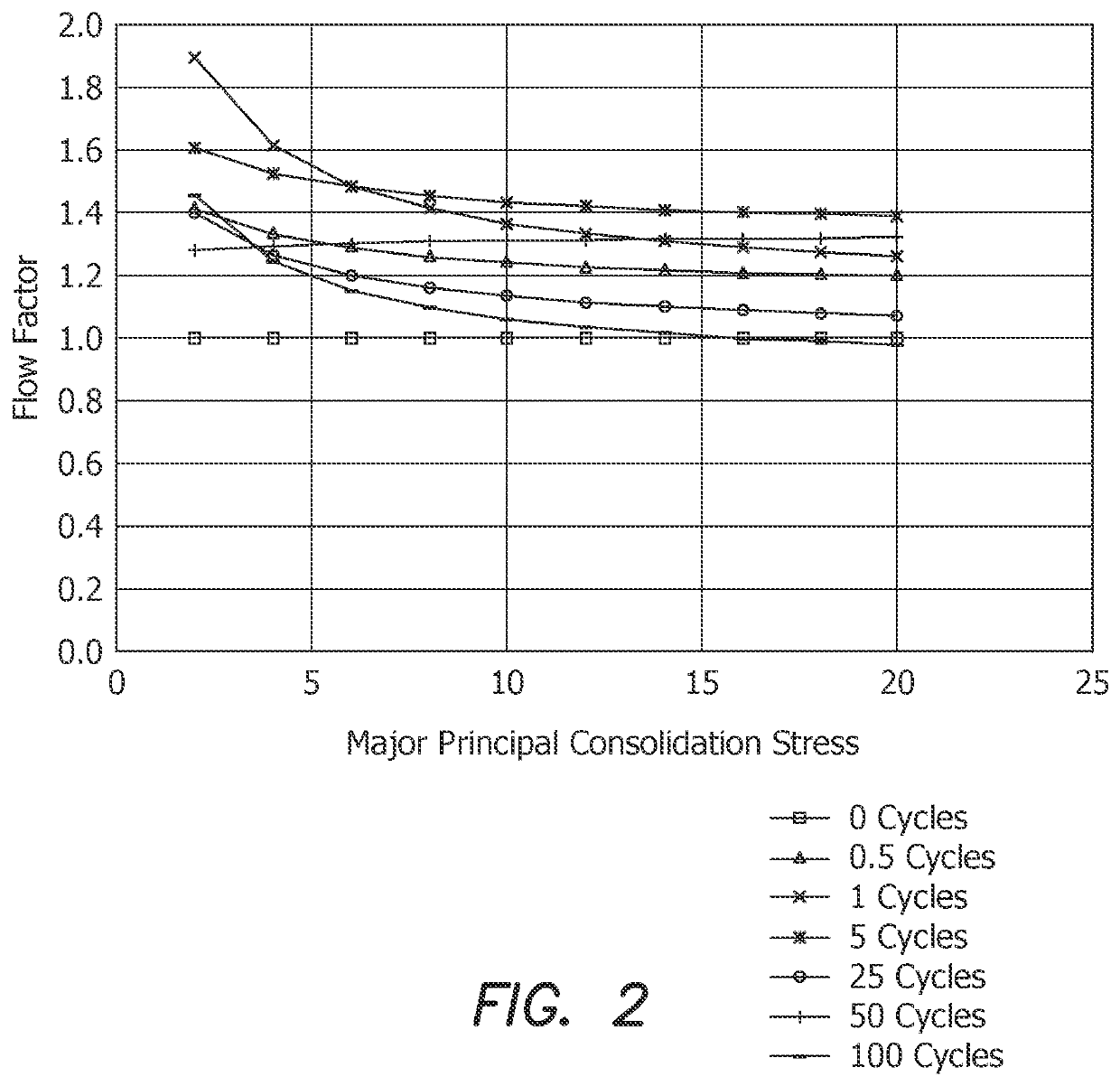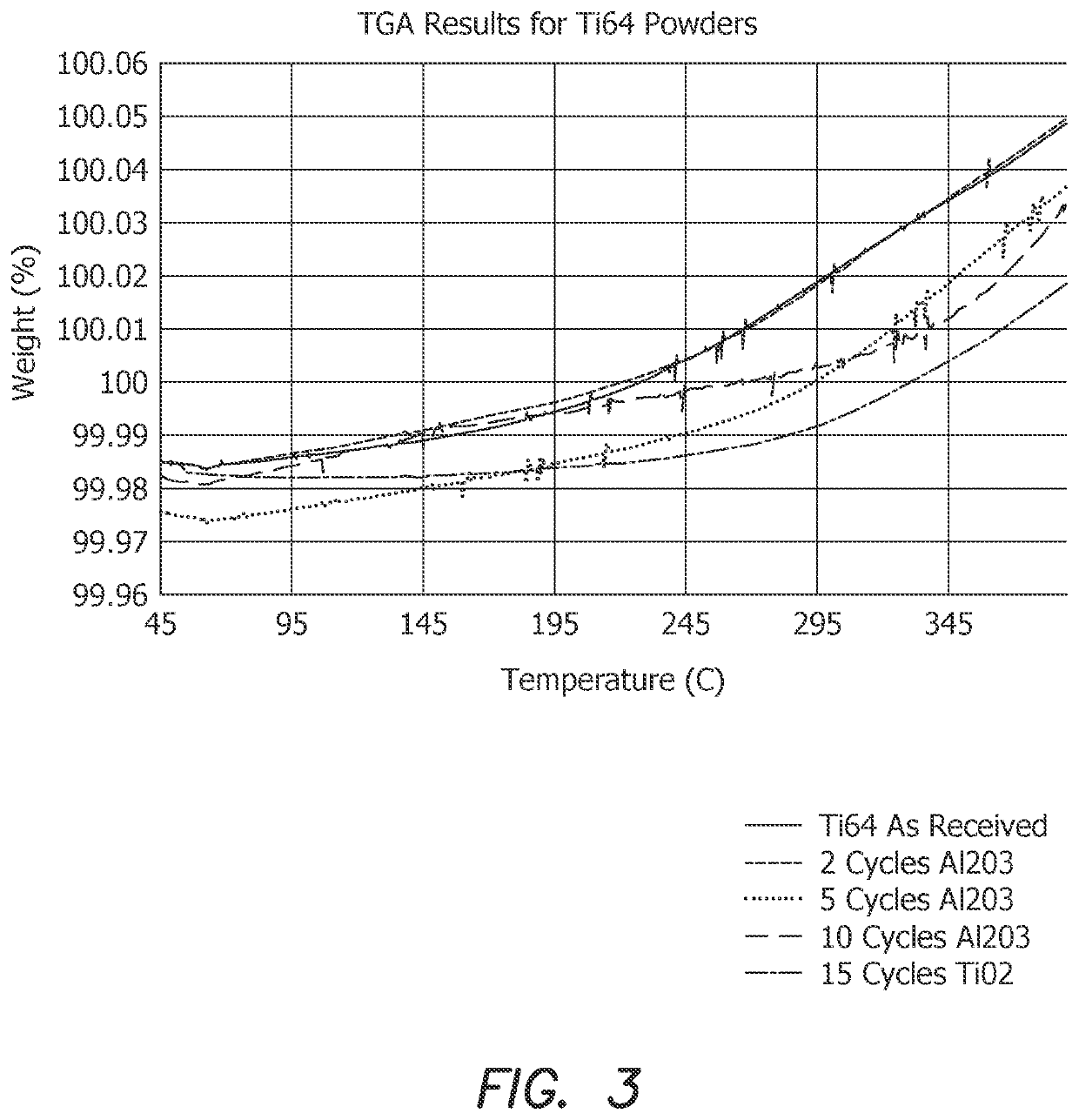Modification Of Particles For Additive Manufacturing
a technology of additive manufacturing and particle, applied in the directions of additive manufacturing process, transportation and packaging, applying layer means, etc., can solve the problems of poor flowability, and achieve the effect of improving flowability, novel material properties, and superior properties of additive manufacturing
- Summary
- Abstract
- Description
- Claims
- Application Information
AI Technical Summary
Benefits of technology
Problems solved by technology
Method used
Image
Examples
examples
Materials and Methods
[0108]For evaluation of the rheology and some other benefits of the invention and various described coatings above, tests have been developed and performed on core metal powders with coatings. Below is a discussion of the methods and results of such tests.
Procedure
[0109]The procedure used for each run is listed below.[0110]1. For each sample number shown in Table 2, a 75 ml atomic layer deposition (ALD) reactor was loaded with ˜100 g of an AlSi10Mg powder. The reactor was evacuated and the powder was allowed to desorb water at room temperature overnight. This was done to limit any reaction between the water and the hot substrate powder. The residual gas analyzer (RGA) detected only water desorption from the bed.[0111]2. The following morning, the reactor was heated to 180° C. and the powder was dried for 4 hours.[0112]3. The powder was coated with the relevant number of cycles according to Table 2. The RGA was used to detect gas phase products ensuring the depos...
PUM
| Property | Measurement | Unit |
|---|---|---|
| Fraction | aaaaa | aaaaa |
| Percent by mass | aaaaa | aaaaa |
| Fraction | aaaaa | aaaaa |
Abstract
Description
Claims
Application Information
 Login to View More
Login to View More - R&D
- Intellectual Property
- Life Sciences
- Materials
- Tech Scout
- Unparalleled Data Quality
- Higher Quality Content
- 60% Fewer Hallucinations
Browse by: Latest US Patents, China's latest patents, Technical Efficacy Thesaurus, Application Domain, Technology Topic, Popular Technical Reports.
© 2025 PatSnap. All rights reserved.Legal|Privacy policy|Modern Slavery Act Transparency Statement|Sitemap|About US| Contact US: help@patsnap.com



